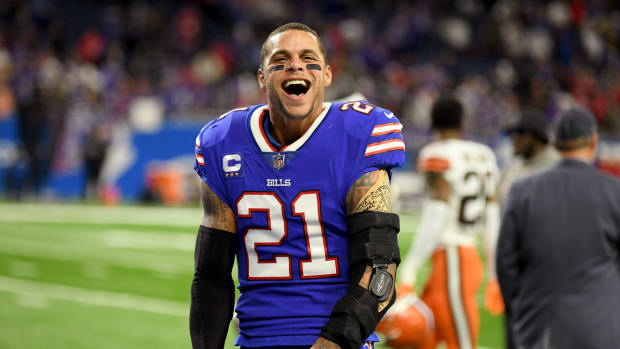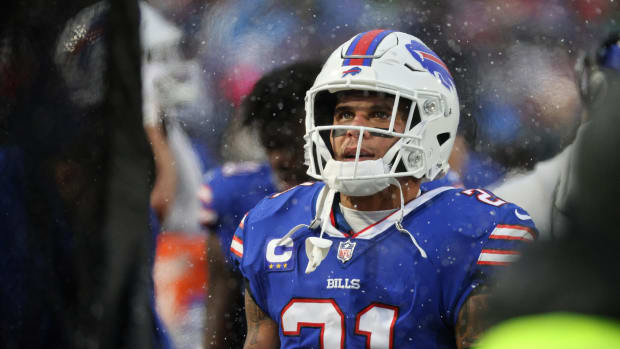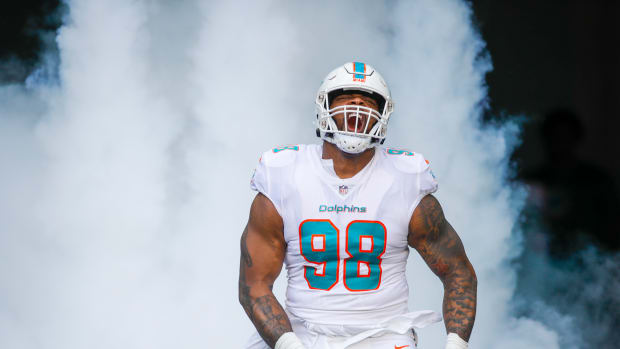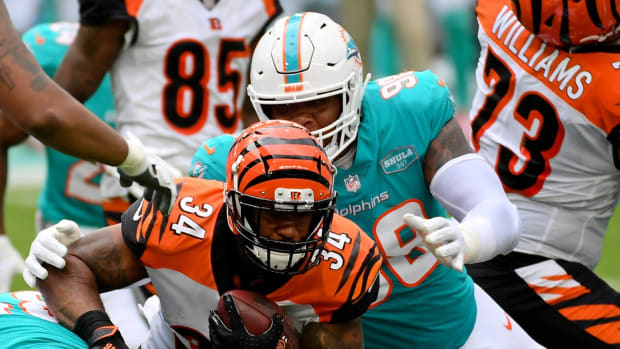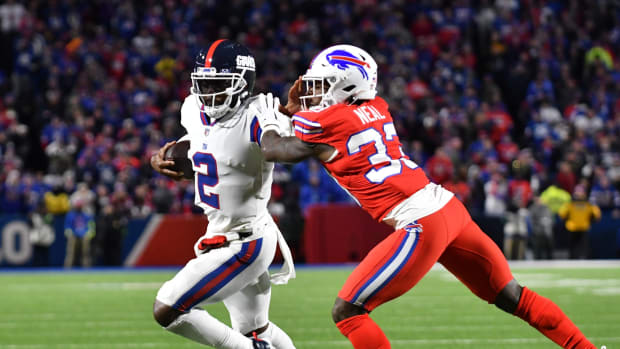The Day After ... Thoughts on the Dolphins Loss at Las Vegas
The Miami Dolphins maybe shouldn't have been in position to win at Allegiant Stadium on Sunday after being outplayed by the Las Vegas Raiders for most of the game, but they were.
And maybe what should stick out about the 31-28 loss isn't so much the ill-fated decision to throw a wide receiver screen in the end zone in the first quarter, but rather a decision made in overtime.
Actually, maybe that should be two decisions.
And it boils down to take the safe, conventional approach instead of flat-out going for it.
And it was quite a contrast to what we saw in Kansas City when the L.A. Chargers went for the first down on fourth-and-9 down in a 24-24 game instead of having their kicker attempt a long-range field goal to take the lead in the final minute.
By contrast, the Dolphins chose to attempt a game-tying 50-yard field goal on fourth-and-2 from the Raiders 32-yard line with about 3 minutes left in overtime.
And that decision came after the Dolphins had Jacoby Brissett shovel a pass to Mike Gesicki in the middle of the line on third-and-3, a play that gained 1 yard.
Understand that the Dolphins had been 3-for-4 on fourth down to that point, the only failure when Brissett was stuffed on a quarterback sneak.
So it's not like the Dolphins couldn't have picked up the 2 yards. Yeah, sure, a failure there would have meant a loss right then and there, but converting would have put the Dolphins closer to the end zone and a potential game-winning touchdown.
Two other factors to consider:
First, while Jason Sanders is a brilliant kicker, a 50-yard kick is no gimme and he already had missed a long field goal attempt earlier in the game.
Second, the Sanders field goal only gave the Dolphins a tie and we have to ask ourselves what the odds were with that little time of the three potential outcomes at that point: win, lose or tie.
A win at that point would have required a three-and-out by the defense, followed by one or two big plays on offense to get back into the field goal range.
Letting the Raiders get a first down or tie would at best have resulted in a tie.
And then there was the scenario that unfolded.
Seems from this vantage point, the percentages weren't very good for a positive outcome.
That's why the right move there is to go for the win.
Analytics website edjsports.com, which breaks down plays and coaching decisions based on their impact on game win probabilities, ranked the decision to go for the field goal as the second-worst coaching move of Week 3 behind only the Packers' decision to kick a field goal on fourth-and-4 up 24-21 against the 49ers with 2:43 left.
THE THIRD-DOWN CALL
And we won't even talk about the third-down call in that series because it's too easy to start dissecting play after play, but let's just say that running a shovel pass with a tight end in the middle with an offensive line that's been struggling seems suspect.
THE RAIDERS SAFETY
Of course, if we're talking suspect play calls, we have to address the safety, which was problematic in so many different ways.
Brissett called it "a dumb decision on my part" after the game, though the dynamics of the play call are unkown. But an overhead replay showed tight end Adam Shaheen wide open in the middle of the field a few yards beyond the line of scrimmage.
The bigger issue was the execution of the play itself, starting with Brissett dropping back before firing instead of simply taking one step back after the snap and immediately throwing to Waddle.
The pass also was a bit high, which convinced Waddle to jump, something he may or may not have needed to do to secure the catch. But he did jump, and that time in the air allowed cornerback Casey Hayward to close in on him to make an immediate tackle in the end zone.
Since it was first down, Waddle clearly would have been better off to let the ball go through his hands and out of bounds for an incompletion than putting himself in that kind of position.
And finally, Waddle never made any move to push Hayward off the line at the snap. What you often see wideouts do on that play is take one hard step forward to suggest they're running a fly pattern, then stop on a dime and turn for the ball. That might have helped too.
Instead, the play was a disaster from start to finish.
GOING DEEP
Then again, none of this would have mattered had the officials called DPI in the end zone against Johnathan Abram when Brissett threw long to Will Fuller V in overtime.
And, let's be honest, there have been a lot of DPIs called for a lot less than that.
The Dolphins did get the benefit of one DPI call on their game-tying touchdown drive at the end of regulation when Mack Hollins was interfered with in the end zone on another long pass.
Maybe the biggest takeaways from those two plays, though, isn't so much what was and wasn't called, but rather one of the benefits of throwing deep from time to time: the ability to draw a DPI penalty for a significant gain.
That's something the Dolphins clearly need to do more often.
